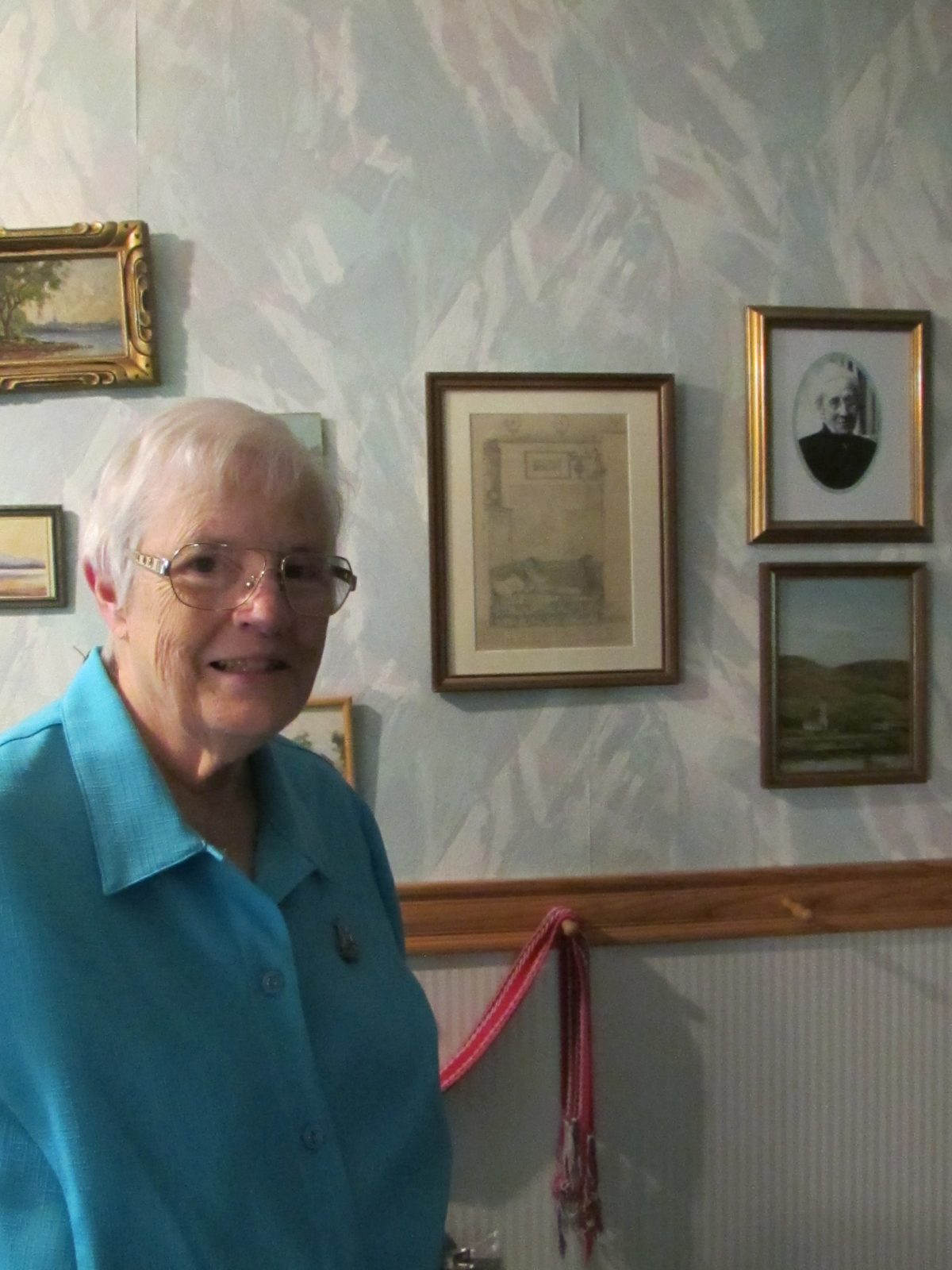It’s nearly impossible to know in advance what will mark a person’s life, for better or worse, and become a lasting part of who they are.
When Margaret Owens was a child, she looked at a painting of a tree on a wooden panel that her grandmother had made and said, “That’s boring.”
A few days later when Owens returned for another visit, her grandmother had painted an additional limb on the tree, with a little owl perched at the end of it.
Anyone walking through Owen’s home today can see her affinity for owls, with pictures and figurines on walls and shelves throughout.
The experiences that touched and shaped Owens’ life are not only on the walls.
With a file folder nearby full of newspaper clippings, she told the story of her 35 children.
“People ask me if I got married and had kids. I say well, actually, I have 35 children.”
Owens was one of a group of nurses working at the Rehabilitation Institute of Montreal in the early 1960s, the time when children affected by thalidomide were born.
A so-called wonder drug, thalidomide was an anti-nausea and sleep aid, developed in Germany, and was prescribed in Canada between April of 1961 and March of 1962, remaining available in some pharmacies until May.
Because the drug was first distributed in Europe, warning bells rang when children born with serious malformations were linked to mothers having taken thalidomide and it was pulled from the market in Germany and the U.K. in 1961.
“They were about a year ahead of us,” Owens explained. Even when the connection was clear, there was a window of a few months when thalidomide, known to cause birth defects, was still available in Canada.
“We got our first one in 1962,” Owens remembered, at the Rehab institute.
“They hadn’t had any very young children there before,” Owens said, but based on what had been reported in Europe, doctors knew thalidomide babies could be coming.
“It wasn’t a case where we knew this was going to happen, we were all learning as it went along,” she said.
Owens explained that the level of complication was dependent on how much thalidomide a mother took, and at which point in her pregnancy. She remembered hearing of one mother who had only taken one pill as a precaution during a flight to Europe and her baby was severely affected; other mothers mentioned taking several doses and their children were minimally affected.
Owens said that at the time, many babies died in utero, and other cases of thalidomide related issues went unreported.
“Nobody wanted to admit thalidomide was given,” she said, adding that some doctors denied prescribing it.
“Mothers felt guilty because they had taken it,” she commented.
During her five years working at the Rehabilitation Institute, 35 thalidomide children visited Owens’ ward. Some came in and out for treatments and evaluation, and some remained at the institute full-time.
“Each child was different,” Owens said, explaining that in addition to physical challenges, each child’s development depended on how their family adapted to the situation.
When she first started, another nurse had the idea of dressing the children by age with 6-month-olds in pink, 12-month-olds in blue, the next age yellow, and so on.
“The first thing I did was change that,” Owens said, insistent the children not be dressed in simple colour coded hospital gowns.
“They weren’t sick,” she said, explaining that while they had major physical challenges to address, the children were active and curious like any other.
“You weren’t just nursing. You were dealing with all the other problems that kids needed,” Owens said, which meant buying clothes for the kids, and sometimes toys as well.
While there were always toy donations coming to the facility, Owens explained they didn’t always suit the children’s needs.
“Say we got six snow shovels. Well, if you don’t have regular hands, they’re pretty useless,” she said, asking to see toys first, or even better, get the money to buy toys appropriate for the children.
“It was fun to go out and spend other people’s money and buy the kids toys they could use.”
“Things like that made us mothers. We had them for 24 hours a day.”
After working with the thalidomide children at the Rehabilitation Institute of Montreal, Owens went on to a number of other positions, from obstetrics, to camp nurse. She helped form Community Aid. She returned to school in the 1990s and studied fine arts and art management.
She agreed that none of her experiences impacted her as much as her 35 children.
“Once a nurse, always a nurse,” Owens said, recognizing that those children would now be in their fifties.
She keeps a close eye on thalidomide survivors’ fight for compensation and care, wanting their story to not be forgotten as the age and their needs change.
Because the effects of thalidomide include deafness, blindness, disfigurement, limb malformations and a host of other challenges, for many the care required is life-long.
In 1991, Health Canada provided a lump sum compensation package for Canadian-born thalidomiders, but Owens that consistent support is needed as they age, and as their parents pass away, leaving many to fend for themselves.






